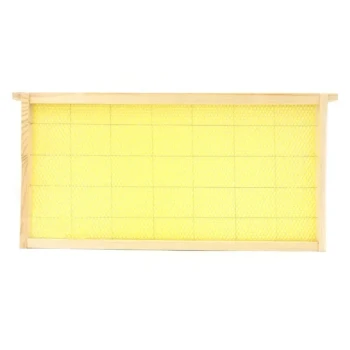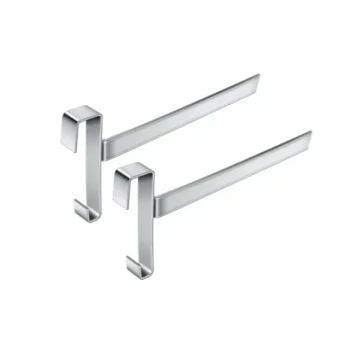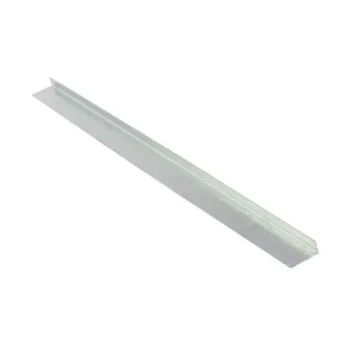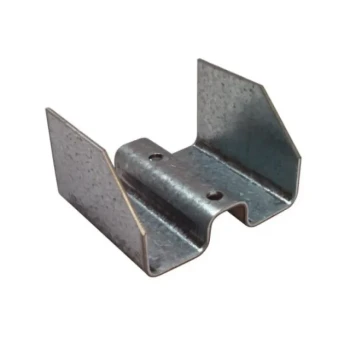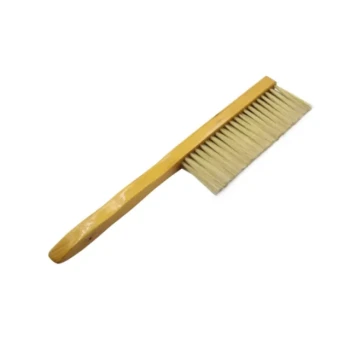Beyond the core frame parts and foundation, several other components are essential for assembling robust and effective hive structures. These include specialized nails for construction, foundation support rods to prevent sagging, and starter guides to encourage proper comb building in foundationless frames. Each component plays a specific role in ensuring the frame's longevity and usability.
The small, often overlooked components used in frame assembly are not mere accessories. They are strategic solutions to common structural and behavioral challenges, directly impacting hive stability, honey extraction success, and overall colony management.
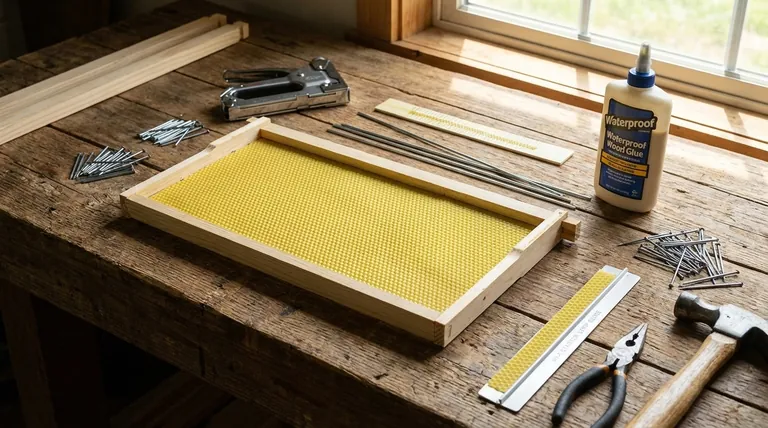
The Role of Fasteners in Frame Integrity
Properly securing a frame is the first step toward building a durable hive. The choice of fastener has a significant impact on how well the frame withstands years of use, inspection, and honey extraction.
Specialized Frame Nails
Standard woodworking nails are often too thick and can split the soft pine typically used for frame components. Specialized frame nails are designed with a very thin shank to minimize this risk. They provide the necessary holding power without compromising the structural integrity of the wood.
Staples and Wood Glue
For beekeepers assembling a large number of frames, a pneumatic stapler offers a significant increase in speed. While staples alone are effective, the gold standard for durability is a combination of waterproof wood glue and nails or staples. The glue creates a rigid bond that prevents the frame from twisting or loosening over time.
Reinforcing the Foundation
The foundation is where the bees build their comb, store resources, and raise brood. Ensuring it remains flat and stable is critical, especially under the weight of honey and in warm weather.
Foundation Support Rods
Foundation support rods, also known as support pins, are thin metal rods inserted horizontally through the frame's side bars. Their primary purpose is to support heavy wax or plastic foundation, especially crimp wire foundation, preventing it from sagging or "blowing out" during the high-speed centrifugal force of honey extraction. This is particularly crucial in hotter climates where wax becomes softer.
Guiding Natural Comb Construction
Some beekeeping philosophies favor allowing bees to build their own comb without a full sheet of foundation. This requires a different set of components to guide the bees' natural instincts.
What Are Starter Guides?
For foundationless frames, a starter guide is a small strip of material placed along the underside of the top bar. This can be a thin strip of wood, a wedge of beeswax, or even a line of melted wax.
The Purpose of a Guide
Bees naturally build comb downwards. Without a guide, they may not build parallel to the frame, resulting in cross-comb that connects multiple frames. A starter guide provides a clear starting point, encouraging the bees to build straight comb within the confines of a single frame, which is essential for hive inspections and management.
Understanding the Trade-offs
Choosing the right components involves balancing durability, cost, and your specific beekeeping goals. There is no single "best" method for all situations.
Skipping Reinforcements
Assembling frames with only nails or staples is the fastest and cheapest method. However, without glue or support rods, these frames are more susceptible to breaking during inspections or blowing out during extraction, leading to lost honey and damaged comb.
Foundationless Freedom vs. Risk
Foundationless frames with starter guides allow for the production of pure beeswax and align with a more "natural" beekeeping approach. The trade-off is the increased risk of cross-comb, which requires more frequent monitoring and potential intervention to correct.
Assembling Frames for Your Specific Goal
Your assembly process should align with your primary objective as a beekeeper.
- If your primary focus is maximum durability and honey production: Use waterproof wood glue and specialized nails, and install foundation support rods in frames intended for honey supers.
- If your primary focus is natural beekeeping or wax harvesting: Use foundationless frames with a clearly defined starter guide and be prepared for more intensive colony management.
- If your primary focus is speed and cost-efficiency for a large number of hives: A pneumatic stapler is your best tool, but consider adding glue to frames in honey supers for extra strength.
Ultimately, building a frame is not just about assembly; it is about constructing a reliable tool for managing your bees.
Summary Table:
| Component | Primary Function | Key Benefit |
|---|---|---|
| Specialized Frame Nails | Secure frame parts | Prevents wood splitting, ensures durability |
| Foundation Support Rods | Reinforce foundation | Prevents sagging, especially during honey extraction |
| Starter Guides | Guide comb building | Encourages straight comb, prevents cross-comb in foundationless frames |
| Wood Glue & Staples | Enhance joint strength | Creates a rigid, long-lasting bond for frames |
Build a more productive and manageable apiary with the right components. HONESTBEE supplies commercial apiaries and beekeeping equipment distributors with the high-quality, durable frame assembly parts they need for success. From foundation support rods to specialized fasteners, our wholesale-focused operations ensure you get reliable equipment for building robust hives. Contact HONESTBEE today to discuss your supply needs.
Visual Guide
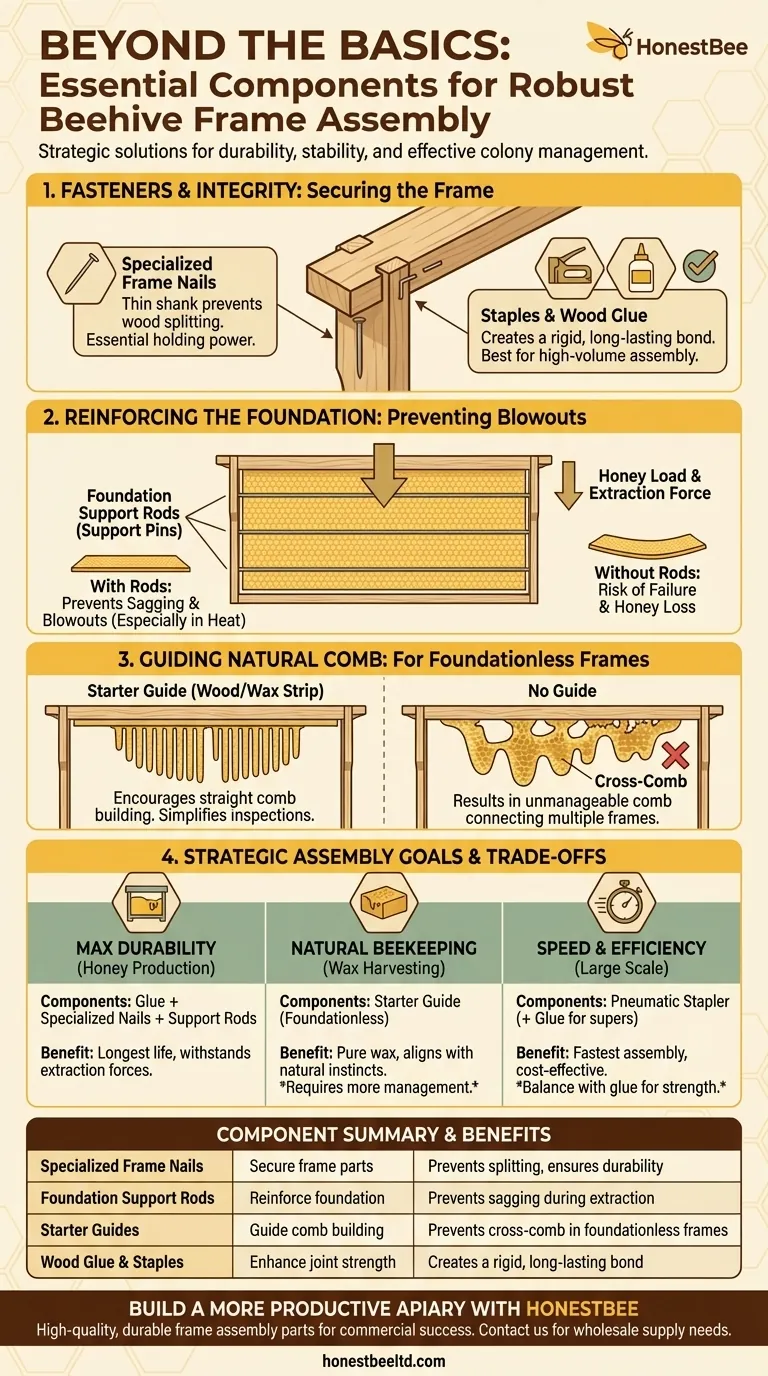
Related Products
- Assembled Wooden Bee Frames with Beeswax Foundation Ready to Use by HONESTBEE
- Heavy-Duty T-Style Frame Perch
- Professional Galvanized Steel Frame Rest for Beehives
- Heavy-Duty Galvanized Steel W-Style Pallet Clip
- 7 x Auto Bee Flow Hive Frames Plastic Beekeeping Hive Box Supplies
People Also Ask
- How do wooden frames perform during honey extraction? Superior Rigidity for a Smoother Harvest
- How many frames fit in a 10 frame hive? A Guide to Maximizing Your Hive's Potential
- When should I throw away my bee frame? A Guide to Hive Health & Frame Rotation
- What are the main parts of a hive frame? A Guide to Modern Hive Anatomy
- What are the advantages of using wooden beehive frames? Natural, Sustainable, and Bee-Friendly
